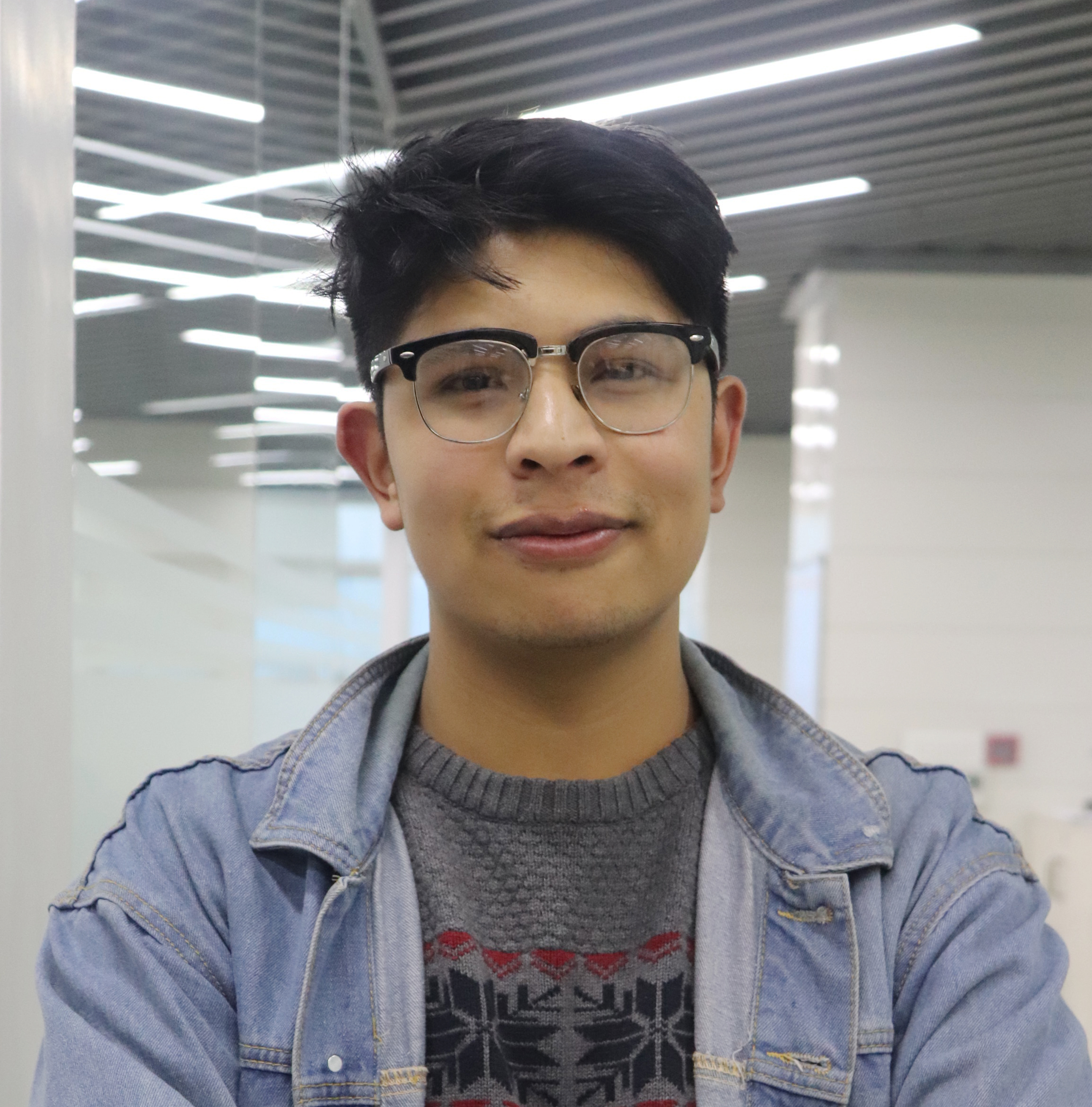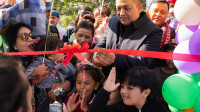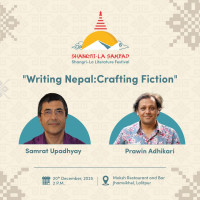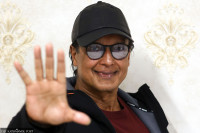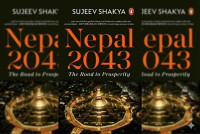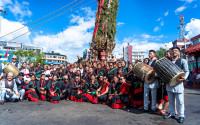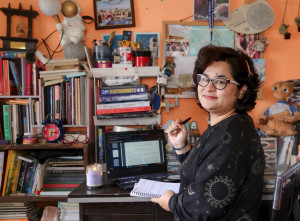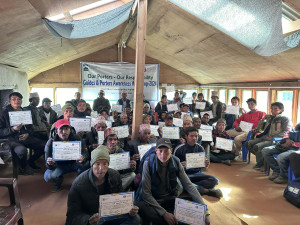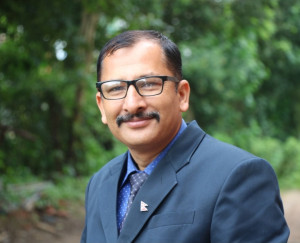Culture & Lifestyle
When art meets activism: How ‘Dhaka-Dhoti’, Nepal’s first Awadhi rap, came to be
Artists Deepak Kahar and Suraj Chhetry talk about their latest smash hit and how they hope to introduce—and highlight—different ethnicities into mainstream Nepali rap.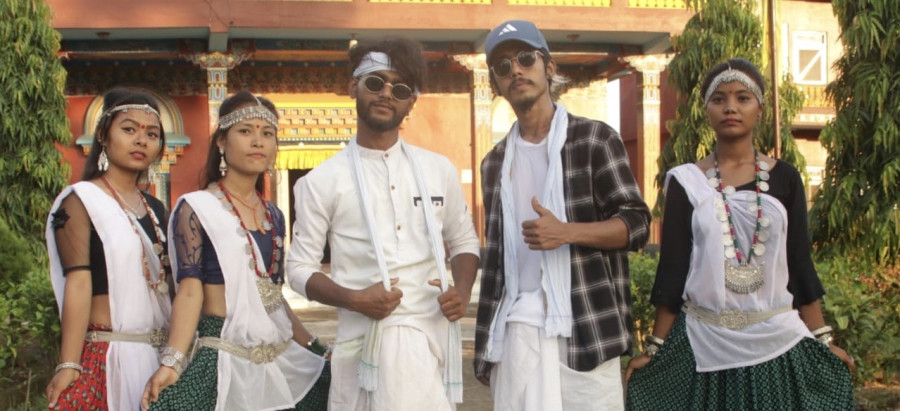
Ankit Khadgi
A native of Rudrapur, a far-flung village in Rupandehi, Deepak Kahar says he has witnessed prejudice and discrimination his community has faced for much of his life.
And for years, the 23-year old rapper and songwriter bottled up all that he felt, he says. But in 2015, he started writing and found solace in words. Slowly his words turned into lyrics, which then took the form of rap songs.
For years he started working on making music. But it was recently that he seems to have found his big break. On July 23, alongside Suraj Chhetry who goes by stage name Vyoma, he released first-ever mainstream Nepali rap song in Awadhi language, titled, ‘Dhaka-Dhoti’, a song reflecting the cultural richness of Madhesi community as well as the need for unity within the diversity of Nepal.
“Dhaka-Dhoti was an attempt to depict the cultural diversity of the Madhesi community,” says Kahar, who goes by the stage name D1. “Through this song, we wanted to show the talent Madhesh can offer and the unique and diverse identities of the Madhesi community and it’s art—beyond the stereotypical representation and the thinking of the masses,” he says.
Though Kahar had previously released four different songs in the Nepali language, where he also reflected the realities of Nepali society through his rap, talking about pertinent issues like corruption, it's the recently released ‘Dhaka-Dhoti’ that showed his talent among the masses, earning more than 300k views within four days of release.
But Kahar says he had an intuition that the song was going to make noise among the masses. “Suraj dai and I made a conscious decision of writing simple lyrics so that more and more people could understand our song,” he says.
Although the lyrical video of the song was uploaded two months back, Kahar had already written some lines of the song nine months before, he says. However, since he was still a newbie in the hip-hop scene as he started out his career, one and half years ago only, he went to Chhetry to show his work and collaborate.
“I knew Suraj dai very well as we live nearby, and many aspiring artists from our locality like me would take suggestions from him,” says Kahar.
When Chhetry read the few lines of the song, even when it wasn’t complete, he instantly fell in love with it. “There has never been an attempt in the mainstream hip-hop scene in Nepal to reflect the Madhesi community in their own culture and language. As someone who grew up in Madhesh and had a close association with people from the community and its culture, I felt that this song could be the ‘one’,” says Chhtery, who has been in the hip-hop scene for the past four years, and is known for his meaningful rap songs like ‘Vinna’ and ‘Aama Timi’.
Then the real work began, they say. As hip-hop requires a perfect blend of beat, lyrics, and rhythm, they started searching for free beats on the internet that would fit perfectly with their lyrics. “After searching, we found a beat that instantly gave the ‘vibes’ for us, and we decided to go with it,” says Chhetry, who along with Kahar wrote the rest of the song within an hour.
Among the different aspects of the song, the song’s title, Dhaka-Dhoti, is getting the most applause—for being both catchy and symbolic, as it summarises the central message and the essence of the song. However, according to Chhetry, the title was the most random decision they had taken. “We still weren't sure about what title would justify our song. Before uploading the lyrical video on YouTube, the idea of having Dhaka-Dhoti as the title, randomly came to my mind as both Dhaka and Dhoti represent the Pahadi and the Madhesi communities, which I and Deepak are part of,” he says. “Likewise, the title also reflected the message we wanted our song to give—to respect the diversity and live with unity.”
But for the singers, the most important thing was to change the narrative of how Madhesi communities were looked upon due to the lack of nuanced understanding of the diversity which they believed could be solved through the representation involving the people from the community itself.
“Only a few attempts have been made to gain a deeper understanding of the Madhesi community and their culture,” says Kahar. “As we both belong to the milieu we felt the need to start representing the true realities and the diversity of culture, arts, and music, the community has, motivating us to release this song,” says Kahar.
Three weeks ago they shot the music video of the song, which ultimately led to its popularity among the masses. From using real-life locations like gallies to farms, and the vernacular architecture of the houses of the Tarai, the video strays away from the usual trend of shooting a rap song in a club or a designed set, where hefty amounts of cash are invested to make the video look glossy. Instead the music video sticks with the main plan and the intentions of the singers—to represent the real Madhesh, making use of warm colour tones throughout the music video, a clever call as it sets the perfect mood reflecting the milieu the singers are intending to represent. “From extras to the location, we wanted it to be as organic as possible,” says Chhetry. And their efforts are tangible on the screen, as the video is shot in a way that captures the beautiful landscape of the Tarai, making the audience feel that they are seeing the plains in their screens.
For both singers, Chhetry and Kahar, hip-hop is not only their way of living but a medium of self-expression, they say. “Through this song (Dhaka-Dhoti) we were attempting to give a new and a unique taste of Madhesi culture and music alongside the social message of equality and unity between the Madhesi and Pahadi community,” says Kahar, who believes that this song will open doors and give for more Madhesi artists like him.
But with the reception and the applause they have received, they acknowledge the challenges and responsibilities that have come with the newly earned fame. “People liked our song because it was different; it reflected a reality they were not close to but one that is as deeply rooted in the soils of our country,” says Chhetry. “Now we are conscious of delivering a similar kind of organic content and have even started working on the second part of Dhaka-Dhoti, which we are writing in Maithili, Awadhi, and Nepali language.”




 19.12°C Kathmandu
19.12°C Kathmandu